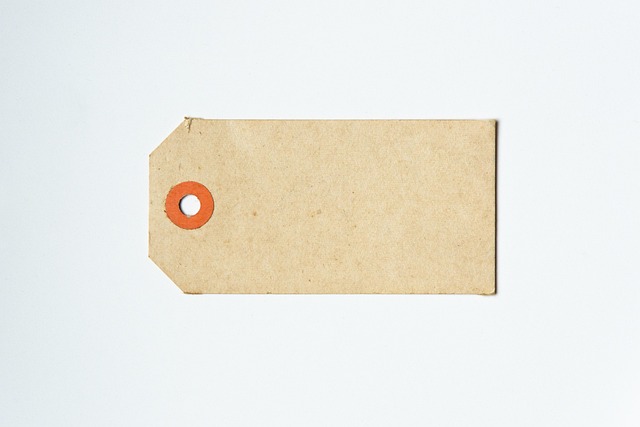Unwanted skin growths like moles, warts, cysts, and tags require specific removal methods based on type and cause. For soft, small appendages, a Bradford Tag Removal procedure may be suitable. Non-invasive options include topical creams with AHAs or laser therapy, while surgical excision offers permanent solutions. Proper post-care and preventive measures are crucial for optimal results and minimizing future growths.
Unwanted skin growths, such as Bradford tags, can be unsightly and uncomfortable. Understanding their types and causes is the first step towards effective removal. This article explores non-invasive methods like cryotherapy and laser treatments for safe and painless Bradford tag removal. We also delve into surgical options and post-removal care tips to ensure optimal results. Additionally, learn strategies to prevent future skin growths from developing.
- Understanding Unwanted Skin Growths: Types and Causes
- Non-Invasive Methods for Bradford Tag Removal
- Surgical Options for Effective Skin Growth Removal
- Post-Removal Care and Preventing Future Growths
Understanding Unwanted Skin Growths: Types and Causes
Unwanted skin growths can manifest in various forms, each with its unique characteristics and causes. These growths include moles, warts, sebaceous glands (cysts), and tags, among others. Understanding these different types is crucial to selecting the most effective removal method. For instance, a Bradford tag removal procedure might be necessary for certain skin tags that appear as small, soft appendages on the neck or armpits.
Causes vary widely, from genetic predisposition to environmental factors such as sun exposure and viral infections. Moles, for example, can be inherited, while warts often result from contact with specific viruses. Knowing the type of unwanted growth and its underlying cause is essential in deciding whether a topical treatment, surgical excision, or a procedure like Bradford tag removal is most suitable.
Non-Invasive Methods for Bradford Tag Removal
Non-invasive methods offer a gentle approach to Bradford Tag Removal, appealing to those seeking minimal trauma options. One popular technique involves using topical creams or solutions containing salicylic acid or glycolic acid. These alpha hydroxy acids (AHAs) exfoliate the skin, helping to dissolve the glue-like substance holding the tags to the skin. They are applied topically and left on for a certain period, then gently washed off, encouraging the growth to naturally slough away over time.
Laser therapy is another non-invasive treatment gaining popularity for Bradford Tag Removal. This method uses concentrated light beams to target and break up the pigment in the tags, allowing the body’s immune system to recognize and eliminate them as foreign bodies. Multiple sessions may be required, but laser treatments are known for their precision and effectiveness in reducing the appearance of these skin growths with minimal downtime.
Surgical Options for Effective Skin Growth Removal
Surgical options offer a more permanent solution for removing unwanted skin growths, such as moles or tags. Procedures like cryosurgery, where freezing liquid nitrogen is used to destroy the growth, are effective but may not be suitable for all types of skin lesions. For more complex cases, surgical excision is often recommended. This involves making a small incision and cutting out the growth, ensuring clean margins to prevent regrowth.
In Bradford, specialized dermatological clinics offer advanced tag removal services using modern techniques. These surgeries are typically quick, outpatient procedures with minimal downtime. They are ideal for individuals seeking permanent solutions to unsightly or potentially harmful skin tags and moles, providing a more reliable and long-lasting outcome compared to non-surgical methods.
Post-Removal Care and Preventing Future Growths
After successfully removing unwanted skin growths, such as tags or moles, proper post-removal care is essential to ensure optimal healing and minimize scarring. It’s crucial to keep the treated area clean and dry, using gentle soaps and avoiding harsh chemicals or strenuous activities that might irritate the skin. Applying a thin layer of antibiotic ointment and covering it with a sterile bandage can promote healing and protect the site from infection. Regularly changing the bandage helps maintain hygiene and facilitates the body’s natural healing process.
Preventing future growths involves adopting proactive measures. Regular self-exams enable early detection of any new or changing skin lesions, which is key to timely intervention. Protecting your skin from excessive sun exposure by using sunscreen and wearing protective clothing can reduce the risk of developing new moles or skin tags. Additionally, maintaining a healthy lifestyle with proper nutrition and hydration supports overall skin health, making it less susceptible to unwanted growths. For persistent issues, consulting a dermatologist for professional advice and treatment options is recommended.
Unwanted skin growths, such as Bradford tags, can be unsightly and uncomfortable. However, with a variety of effective non-invasive methods like cryotherapy and surgical options available, permanent removal is achievable. Understanding the causes and types of these growths is key to choosing the right treatment. After removal, proper care and preventing future growths through regular skin check-ups are essential to maintaining clear, healthy skin. Remember, seeking professional advice for Bradford tag removal can help you regain your confidence and enjoy a smoother complexion.
